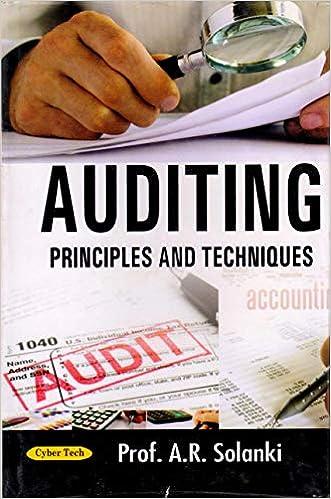Answered step by step
Verified Expert Solution
Question
1 Approved Answer
Ratio analysis apart, another useful way of analysing financial statements is to convert them into common size statements by expressing absolute rupee amounts into percentages.

Ratio analysis apart, another useful way of analysing financial statements is to convert them into common size statements by expressing absolute rupee amounts into percentages. When this method is pursued, the income statement exhibits each expense item or group of expense items as a per centage of net sales, and net sales are taken at 100 per cent. Similarly, each individual asset and liability classification is shown as a percentage of total assets and liabilities respectively. Statements prepared in this way are referred to as common-size statements. Common-size comparative statements prepared for one firm over the years would highlight the relative changes in each group of expenses, assets and liabilities. These statements can be equally useful for inter-firm comparisons, given the fact that absolute figures of two firms of the same industry are not comparable. Financial statements and common-size statements of the Hypothetical Ltd are presented in Example 6.10. EXAMPLE 6.10 The accompanying balance sheet and profit and loss account relate to Hypothetical Ltd. Convert these into common-size statements. Balance Sheet as at March 31 (Amount in lakb of rupees) Particulars Previous Year Current Year Liabilities Equity share capital of 210 each) 240 240.0 General reserves 96 182.0 Long-term loans 182 169.5 Creditors 52.0 Outstanding expenses Other current liabilities 6.5 600 650.0 (Contd.) 67 6 9 y13 6.40 (Contd.) Assets Plant (net of accumulated depreciation] 402 390 Cash 54 78 Debtors 60 65 Inventories 84 117 600 650 Income Statement for the Year Ended March 31 (Amount in lakb of rupees) Particulars Previous year Current year Gross sales 370 480 Less: Returns 20 30 Net sales 350 450 Less: Cost of goods sold 190 215 Gross profit 160 235 Less: Selling, general and administrative cost 50 72 Operating profit 110 163 Less: Interest expenses 20 17 Earning before taxes 90 146 Less: Taxes 31.5 51.5 Earning after taxes 58.5 94.9 38888 8 8 9 10 %
Step by Step Solution
There are 3 Steps involved in it
Step: 1

Get Instant Access to Expert-Tailored Solutions
See step-by-step solutions with expert insights and AI powered tools for academic success
Step: 2

Step: 3

Ace Your Homework with AI
Get the answers you need in no time with our AI-driven, step-by-step assistance
Get Started


